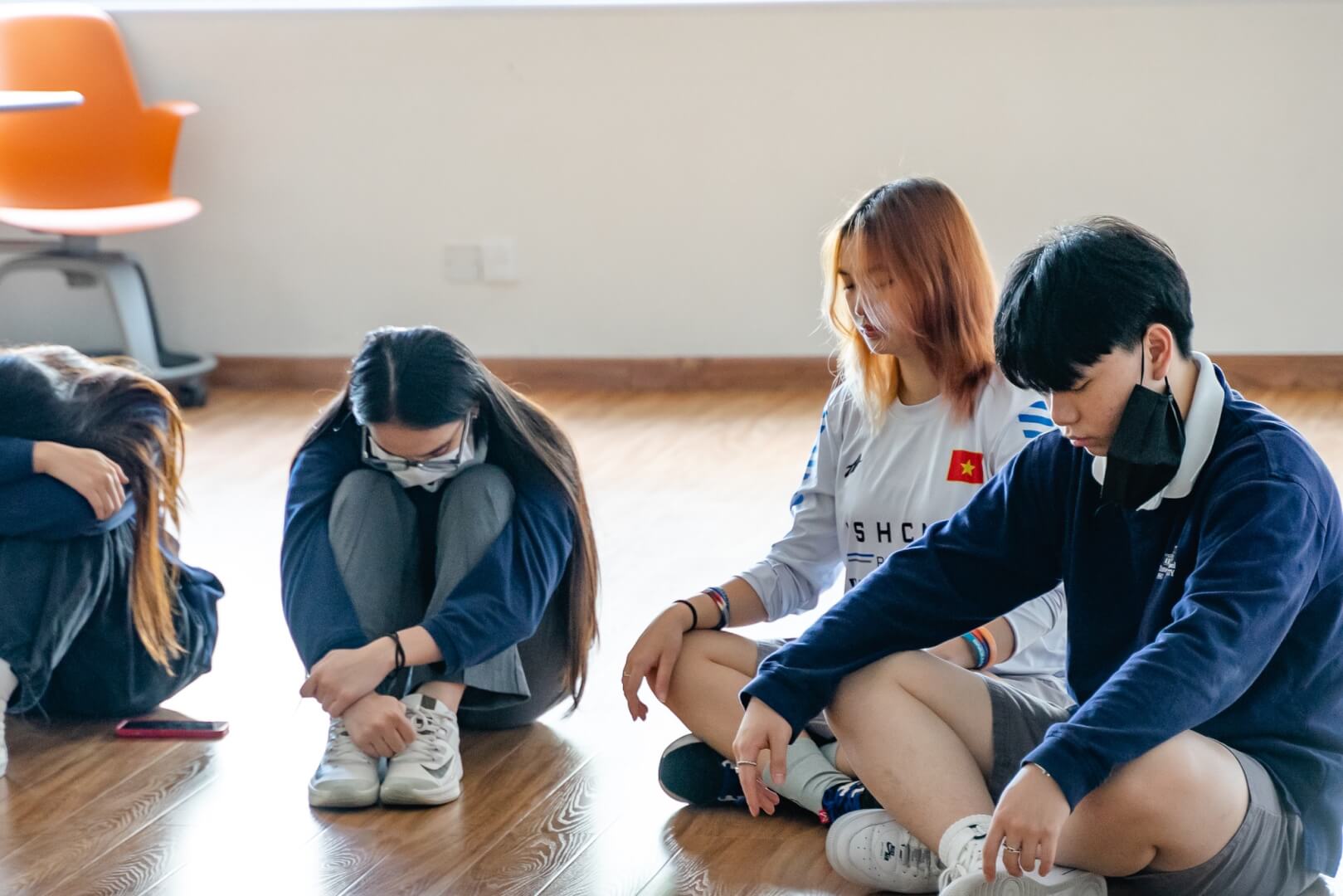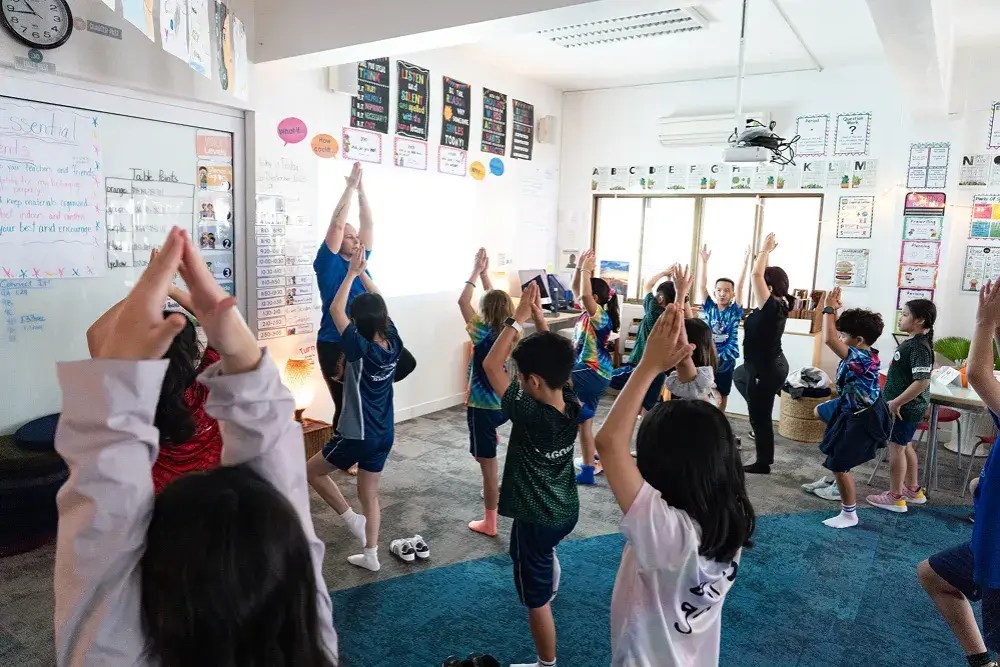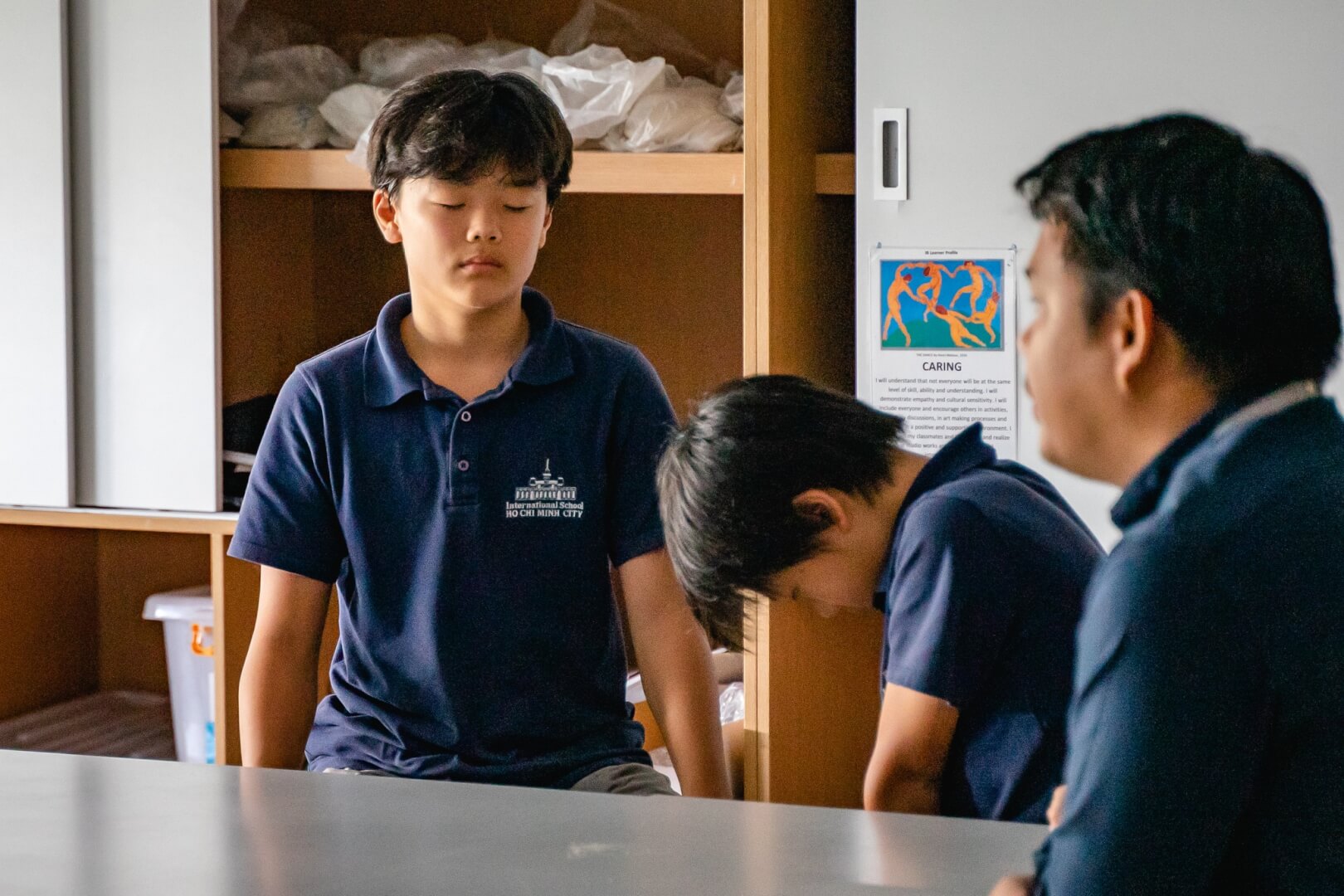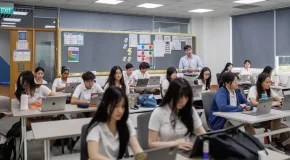How to Reinforce Your Child’s Resilience by Enhancing Their Stress Management Techniques
“I’m so stressed!” is a phrase students readily express as they navigate the complexities of balancing their personal, social, and academic lives. Stress is an automatic response we all face when a new or unexpected situation arises. Supporting students to recognize the signs of stress and how to develop healthy ways to manage it is an essential component of our Culture of Care. ISHCMC works in partnership with our whole school community to support our students in building a foundation for long-term wellbeing through our pastoral support structures.
What Is Stress and Why Do Students Experience It?
Stress is the body’s automatic response to new or unexpected situations. Our body sends out “fight or flight” signals when faced with a challenge. Stress is necessary for us to thrive and grow. It helps us to sharpen our focus, boost energy, and motivate us to act.

Three Common Signs of Stress in Students
It is important to recognize the emotional, behavioral, and physical signs of stress.
#1/ Emotional Changes
When a student experiences prolonged or unexpected stress, their emotional regulation can become unstable.
These emotional changes may include:
- Irritability
- Mood swings
- Anxiety, worry, or fear
- Loss of interest in activities
- Feeling lonely or isolated
- Lowered confidence or self-worth
#2/ Changes in the Behavior
Behavioral changes often reflect a student’s internal struggle to cope. A once highly engaged student or learner may start missing deadlines or withdrawing from group activities. Social avoidance, procrastination, and lack of motivation can all be coping mechanisms for deeper stress.
Watch for these behavioral shifts:
- Avoiding responsibilities at home, in school, or with relationships
- Avoiding social situations
- Difficulty concentrating or making decisions
- Lack of motivation
- Increased use of digital devices as an escape
#3/ Physical Changes
Stress doesn’t only affect the mind. It often shows up in the body, sometimes before a student even realizes they’re emotionally overwhelmed. These physical symptoms are important signals that something deeper might be going on.
Physical signs may include:
- Headaches, stomachaches, or unexplained aches
- Changes in eating habits, too much or too little
- Changes in sleep patterns, too much or too little
- Fatigue or low energy
- Jaw clenching, teeth grinding, or restlessness
- Frequent illnesses due to a weakened immune system
Teaching Students to Understand and Respond to Stress
Knowing the signs can help our students to identify when stress is present and how they can react to it. Our perception of the events unfolding around us can lead to managing stress in a healthy or unhealthy way. For example, a student facing three upcoming deadlines might view this as an impossible task, while another might find this a great chance to test out their time management skills.
Building Awareness Through POSISH and Pastoral Support
Through our POSISH lessons and support from our counselors, students are taught to reflect on ways to manage their stress. Students are asked to take a step back from the situation and ask themselves:

- What can I do about the situation now?
- What is within my control and what isn’t?
- How can I plan to make this easier?
- How can I identify situations that can cause me stress?
Encouraging our students to focus on what they can control in their environment fosters a sense of empowerment. Students feel they can use a variety of tools to manage their stress. Students learn during their pastoral lessons about the difference between healthy and unhealthy coping strategies.
Healthy coping strategies are those that help students manage their stress instead of avoiding or suppressing their feelings.
Healthy Coping Strategies for Managing Academic Stress

- Physical activity – students are encouraged to engage in sports, stretching, or any activity that can get their bodies moving. ISHCMC has a wide range of after-school activities and athletics teams so students can be both physically active and develop collaborative social skills.
- Relaxation techniques – students are taught mindfulness strategies each day. They learn how deep breathing, progressive muscle relaxation, or even guided imagery can help calm their body.
- Creative outlets – students are given opportunities through Art lessons to express and process their emotions. Secondary students also have an extensive Service As Action activities built into their school day so they can develop leadership skills and offer creative programs for their peers.
- Social relationships – students are encouraged to balance their time with their friends and family so that they feel comfort and safety. Knowing you are cared for greatly reduces any feelings of loneliness and helps remind us to reach out for help when needed.
- Organizational skills – students learn study strategies and effective organizational skills during the IB Core lessons.
- Healthy routines – through PHE and POSISH lessons, students are explicitly taught the importance of a balanced nutrition, regular sleep, and downtime away from screens.
Teaching Flexibility: There’s No One-Size-Fits-All for Stress
It’s important for our students to recognize that different strategies work better at different times. Speaking to our students about having a toolbox of coping skills is essential for them to know that stress management is not a one-size-fits-all solution. It takes time and effort to identify our stresses and how to manage them effectively.
Stress is an unavoidable part of life. Our goal is to teach our students to recognize and manage stress so they can grow through it.
FAQs
Can parents support the student to manage stress at home?
Absolutely. Parents play a vital role in reinforcing the coping strategies taught at ISHCMC. At home, families can support students by encouraging open conversations about stress, modeling calm responses to challenges, and helping their child build balanced routines with enough time for sleep, screen-free relaxation, and movement. You don’t need to solve every problem for them, but being present and validating their feelings makes a significant difference. Even simple daily check-ins create emotional safety that reduces student stress over time.
Can I combine the suggested coping stress management strategies with other wellness practices?
Yes, and in fact, combining coping strategies with other wellness practices is encouraged. While students at ISHCMC learn specific techniques through POSISH, PHE, and pastoral lessons, they are also supported in exploring what works best for them. That could include journaling, breathing exercises, yoga, art therapy, or guided meditation apps. As long as the strategies are healthy and provide real relief, not avoidance, they can absolutely be personalized.
Do Coping Strategies apply to social stress, not just academic?
Yes, coping strategies at ISHCMC are designed to support students in all areas of their lives, including social stress. Challenges with friendships, peer pressure, or feelings of isolation can be just as overwhelming as academic deadlines. Techniques such as mindfulness, reflection, movement, and creative outlets help students process social stress and respond more thoughtfully. Building strong, trusted relationships, another key strategy, also reduces social stress by creating safe spaces for students to be themselves.
What’s the most important part of the Coping Strategies to start with if I’m overwhelmed?
Start with what’s in your control. At ISHCMC, students are guided to first pause and assess: What can I do right now? When feeling overwhelmed, the first step is usually one simple action like organizing a to-do list, doing a breathing exercise, or talking to a trusted adult. These small wins calm the nervous system and give students a sense of control. The goal isn’t to use every tool all at once, but to build confidence in using one or two strategies consistently.
Can students use the Coping Strategies before a big performance or competition?
Definitely. In fact, that’s one of the best times to apply coping strategies. Whether it’s a debate, exam, sports match, or musical performance, students are taught how to manage stress in real-time. Techniques like breathing, visualization, and staying focused on what’s within their control help shift their mindset from pressure to presence. Many students at ISHCMC use these tools before competitions, presentations, or interviews to boost performance rather than be blocked by anxiety.







